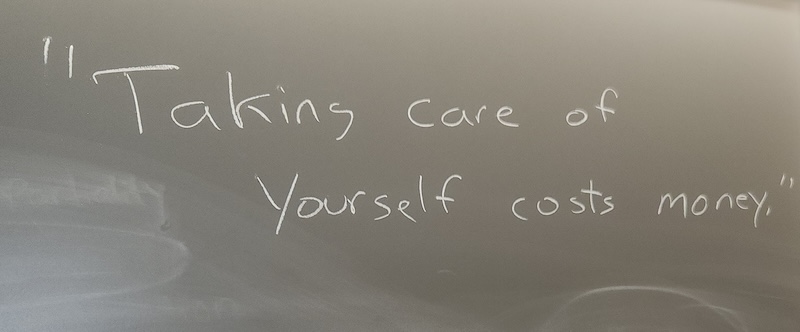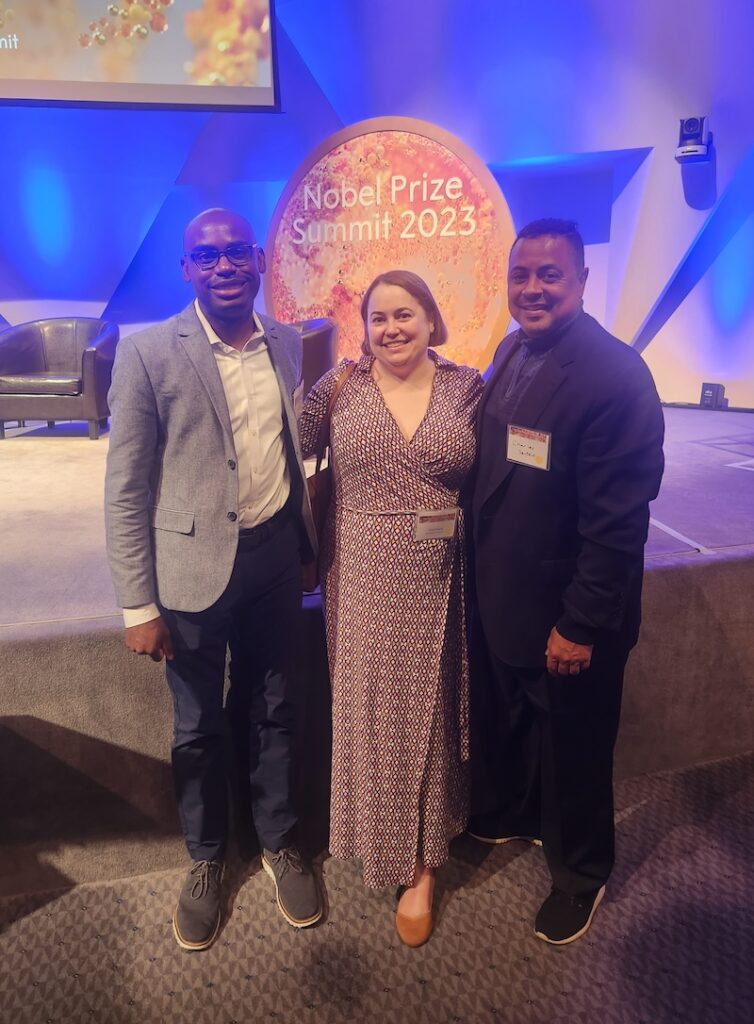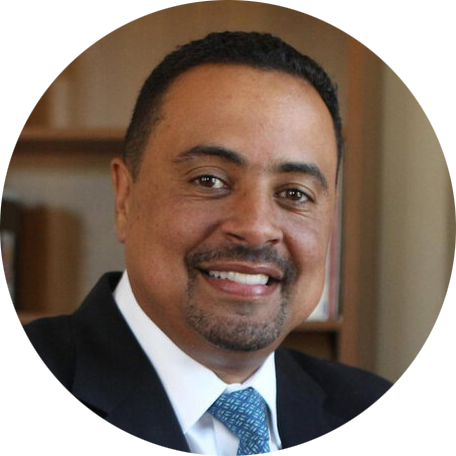The “Invisible Benefits” of the Mercury Project Research Consortium
by Charles Senteio
In this essay, Rutgers University professor Charles Senteio describes how his research has been enhanced by the “invisible benefits” of participation in the SSRC’s global Mercury Project research consortium. He illustrates how funders’ choices in structuring collaborative work–within and across teams–create value beyond the direct funding of research projects, enabling new ideas and collaborations that wouldn’t have otherwise happened.
I first discovered and used the Invisible Work Framework during my PhD study; I now use it in my research and teach it to my health informatics students. I introduce the Framework in my undergraduate health informatics course when I introduce the social determinants of health. During the most recent semester, after my summary lecture a student eloquently expressed: “Taking care of yourself costs money.” I wrote it on the board, underlining the point. We paused for a minute, allowing students to absorb it.

I approach classroom interactions this way, informed by my interest in health equity and the various drivers. But in addition to teaching, I am a social scientist concerned with translating research into practice to promote health equity—in a new book, I will be exploring how perceived discrimination influences health behaviors for Black Americans. I am also a healthcare consultant, focused on improving the quality of care for underserved patient populations. And I am a licensed therapist with a small private practice. All of these roles inform my work. And it takes work, often invisible, to draw from these various disciplines and networks.
The student got it exactly right: the work of taking care of oneself incurs costs—ones that often are invisible to those who don’t know to look. These logistical costs include getting transportation to a clinic or time off from an hourly wage job to attend an appointment. These costs can go unseen by those not attuned to the lived experience of individuals on the margin, who too often simply don’t ask.
My research too incurs “invisible costs” because doing engaged, interdisciplinary, inter-institutional, and international work imposes costs on researchers that frequently are not visible to many research supporters. These costs exist because of weak infrastructure, which is not designed for the cross-disciplinary and cross-institutional collaborations necessary to design and execute translational health equity research, and because many researchers aren’t trained as networkers or communicators. Doing interdisciplinary health equity research can incur search and decision costs, direct and opportunity costs; it is not possible to do this research without a strong network.
Well-designed consortia—creating connective infrastructure and skills within and across teams— catalyze new, solutions-oriented ideas and collaborations, alleviating some invisible work. Yet these benefits will likely remain invisible to key allied stakeholders. Typical final reports describing research results may elide the full value of investing in efforts such as the Mercury Project. In this post, I use myself as a case study to bring to light how well-designed research consortia, like the Mercury Project, can bring about invisible, synergistic benefits beyond the directly-funded research.
In-Person Connections: Building a Foundation for Future Collaboration
I initially presented my team’s work—Combatting inaccurate health information with community-crafted messaging—to the wider consortium at the first Mercury Project research consortium in-person convening. We are using innovative methods to design and assess the effectiveness of public health messaging in Brazil and Mexico. At the outset of the project, this convening enabled me to get feedback on our approach from fellow Mercury Project grant awardees at a critical juncture of the project. The in-person convening also served a vital purpose of enabling awardees to meet and get to know each other.
Beyond this research feedback, we created critical intellectual and human connections at The Rockefeller Foundation’s Bellagio Center. By design, we had time to connect and converse, laying foundations whose impact will be felt far beyond the Mercury Project. Together, grantees and allied stakeholders generated inputs for the Mercury Project Research Framework, which connects all of our projects, allowing for cross-project summative statements.
I had not met any of these researchers before our paths crossed in Bellagio in summer 2022; I do not think our paths would have crossed otherwise. Now I commiserate and collaborate with them. We provide intellectual and cognitive support, as well as emotional support, to one another. Translational, interdisciplinary health-equity work requires that researchers build and nurture their networks: these relationships represent the connective tissue that enables the existing work, and spawns new investigations.
My specific Mercury Project team is based on research connections and nascent ideas forged in 2020 and enabled by this grant. Drawing on my life experiences and professional roles, my research focuses on people: how they think, how they perceive the world around them, and how those perceptions may influence health behaviors. For example, I became more interested in misinformation early in the pandemic because I saw that people’s perceptions about the pandemic, its causes, and recommendations designed to keep us safe (e.g., social distancing), were already influencing their intended behaviors. I was a part of various virtual discussions with people of color from my network around the U.S., via Zoom and chats. I heard people, some of whom I’d known for decades, openly questioning local social distancing guidelines, which tended to shift quite frequently. At times, I questioned them too. I noted similar scrutiny of masking recommendations, and then vaccine recommendations.
As “the science” rapidly evolved under unprecedented public view during the summer of 2020—amid parts of the world undergoing a racial reckoning—we scientists scrambled to address escalating uncertainty. First we sought to understand “the science.” Then we attempted to inform others of it. I grappled with these issues during my MLK visiting faculty appointment at MIT’s Sloan School of Management. While there in Fall 2020, I wrote about how we scientists needed to consider communicating what we know—and what we do not know—to the public, an audience we do not typically address.
While at MIT, I met cognitive and decision scientist Dave Rand, now co-PI on our Mercury Project initiative. Not only did the Mercury Project allow us to intensify our existing bilateral relationship, we now have a core team of seven. Our project illustrates a fundamental vision of the Mercury Project: convening multidisciplinary research teams (in our case, social work, information science, behavioral economics, and psychology), and involving local stakeholders rooted in their communities, along with local policymakers who are in a position to use our findings.
Representatives from each Mercury Project team will gather in October 2024 in Nairobi to put our findings to use. For many of us, the Mercury Project represents one of the few opportunities to meaningfully engage with colleagues from other disciplines and continents. Traversing these differences in research training, methodology, approaches, institutions, countries, languages, and cultures is a rare opportunity to expand our methodological skills and grow our research networks.
Building Networks: Strong Bridges to Support Problem-Solving Research
Mercury Project funding has enabled me to expand and accelerate my own network of social science collaborators who are interested in translational research that impacts lives around the world. Doing excellent translational health equity work requires being interdisciplinary and, often, inter-institutional. In turn, this requires strong networks and skills, such as joint appointments across institutions, the ability to collaborate across disciplines, and frameworks to structure effective cross-disciplinary working groups. I have refined each of these through connections made via the Mercury Project, with benefits for myself and the field.
Everyone wants to build bridges—but you really need a dedicated person to do it. Through my new networks, I connected with the University of Johannesburg Department of Psychology. South Africa is an important setting for research into race and health inequities and I am excited about the opportunity. To ensure that new insights and applied results emerge from our engagement, the University of Johannesburg offered me a research associate role, which my institution, Rutgers, approved.
Bridges that span disciplines and methods are a critical piece of the infrastructure necessary for research to achieve maximum impact. In Bellagio I met a Mercury Project colleague, Lisa Fazio of Vanderbilt University. Since meeting, we have launched pilot studies on how group resiliency—and despair—influence susceptibility to misinformation. Rather than focus on the producers and spreaders of misinformation, we share an interest in those who are vulnerable to it, including racial minority groups who have been deliberately targeted with misinformation. Through her connections, I recently presented our work at a conference of social psychologists, who are outside the networks I’d usually interact with, and who helped to cross-pollinate my emerging research with insights from outside my fields. Building bridges is hard; maintaining them is harder. Interdisciplinary working groups are, in theory, a promising way to sustain bridges. But many more are formed than are effective. I have gained key tips from yet another Mercury Project colleague I wouldn’t have otherwise met, Neil Lewis Jr. of Cornell University. Like me, Neil is a social scientist who convenes interdisciplinary teams. Based on insights he provided in building his Action Research Collaborative, I led the creation of the Health, Humanities, Communication, Informatics (HHCI) working group, which spans Rutgers’ Library and Information Science, Communication, Journalism, and Applied and Clinical Psychology Departments.

Investing in Infrastructure: Funding Research Consortia Amplifies Impact
Funders should understand the amplifying effect their funds can have on researchers, and consequently, our teams, as we push the limits of what research can elucidate and achieve. These types of multidisciplinary cross-cultural research collaborations require strong personal connections to sustain them. The Mercury Project convenings—both virtual (monthly) and in-person (annual)—have enabled these relationships. In this moment in which trust in institutions globally is diminishing, the need for personal connections between the individuals who represent these institutions has never been more vital.
The Mercury Project grant award is the largest I have had as a PI or Co-PI. But the value goes far beyond direct research funding. The grant has further expanded my research questions and networks outside my home disciplines, and even outside my continent and cultural context. The projects I’m now pursuing won’t be funded by the Mercury Project—but would never have materialized without it. The kinds of questions I’ll be exploring for the foreseeable future look vastly different from what I would have been doing had I never been part of this network.
The Mercury Project showcases the value of convening teams of cross-disciplinary researchers working collaboratively to produce and disseminate new knowledge that can affect social change. Well-selected teams of talented individuals and thoughtfully designed convenings enable new collaborations that would not emerge from isolated individual grants. The Mercury Project facilitates the new network connections that are vital to designing compelling multidisciplinary studies that are well-positioned for funding and impact, and to providing the social support essential to persist in designing, executing, and disseminating this important work.

Charles Senteio is an associate professor in the Department of Library and Information Science at Rutgers University, who studies how to improve health of vulnerable populations, particularly by improving access to information. He holds a PhD in health informatics, an MBA, a Master’s degree in social work and is a practicing therapist.

